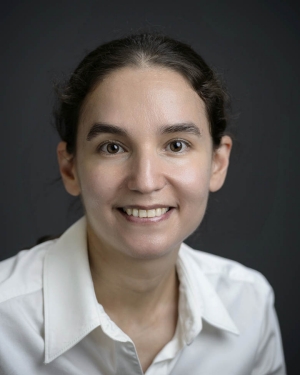Computational Biomechanics and Solid Mechanics Laboratory Research
Current studies include:
Evaluation of Microscale Fracture Mechanisms in Bone
Microscale material property heterogeneity and microstructure are important contributors to the fracture resistance of cortical bone as shown by experiments in the literature; however, the extent of individual influence and relative contribution of these factors to the fracture resistance of cortical bone have not been quantified.
In order to address this gap, this project is focused on the development of novel modeling techniques that are capable of simulating the crack propagation process as a function of microstructure and microscale material properties. Our initial studies evaluated how the changes in cement line properties influence the crack propagation path. Our subsequent studies focused on the influence of overall material property heterogeneity and microstructure. The findings in this work so far have provided significant new information on how different levels of material property heterogeneity and microstructure influence crack propagation behavior in cortical bone that cannot be measured by experiments.
Influence of Submicroscale Spatial Arrangement and Material Properties on Bone Fracture
At the submicroscale, although the current literature has identified the important mechanisms through which mineralized collagen networks contribute to the fracture resistance of bone, the amount of contribution of these factors to fracture toughness at larger length scales is still not well understood, particularly, due to the challenges of experimental evaluation at this scale.
In order to address this missing knowledge, this project focuses on the development of novel 3-D models of mineralized collagen fibril networks, including explicit representation of extrafibrillar matrix. The new framework developed in this study generated unique information on the effect of mineralized collagen fibril network spatial arrangement and material properties on the fracture behavior of bone at the submicroscale, which cannot currently be measured via experiments.
Noninvasive Patient-Specific Fracture Risk Assessment
Recent studies show that fracture incidence cannot be predicted by bone mass alone and factors such as bone geometry, microstructure and bone’s material properties affect an individual’s fracture risk.
The overall goal of this research is to develop a new and improved noninvasive patient-specific fracture risk assessment tool that utilizes in vivo, high-resolution peripheral computed tomography (HR-pQCT) and fracture mechanics-based finite element modeling. We have developed a new fracture risk evaluation approach for distal radius bone fracture that brings significant improvement over the existing strength-based modeling techniques in the literature. The results obtained from this study to date have shown how the fracture load changed with age-related alterations in material properties and different loading conditions and identified the individual contribution of the cortical compartment to whole bone fracture risk providing additional information on the fracture processes at the macroscale.
Assessment of Mechanical Behavior of Biomimetic Materials
This area of research focuses on the development of new or evaluation of existing biological materials to attain high performance man-made materials ranging from biomedical to structural applications. One of the projects under this broad area is the evaluation of the influence of the various morphological parameters on the mechanical properties of hydroxyapatite (HA) nanocomposite to identify the best performing material arrangement and morphology. Another project is improving the understanding of the toughening mechanisms in Strombus Gigas to advance the development of biomimetic composites inspired by this biological material.
Funded Research
The Role of Suppressed Bone Turnover in Cortical Bone Material Composition, Organization and Fracture Resistance
Sponsor: National Science Foundation
Dates: 9/2014-8/2018
This project focuses on advancing the understanding of the changes in material composition, organization and fracture resistance of bone due to suppressed bone turnover via multiscale computational modeling. Bisphosphonates are the most commonly used osteoporosis treatment that has been effective in preventing osteoporotic fractures by suppressing bone turnover. Despite the beneficial effects of bisphosphonates, there is accumulating evidence of a potential complication in the form of atypical femoral fracture. The recent reports of possible association of atypical femoral fracture with prolonged bisphosphonate use brought into attention the possibility of adverse mechanical modifications in bone due to extensive suppression of bone turnover.
The project utilizes a new fracture mechanics-based finite element modeling approach to perform systematic and controlled evaluations at multiple scales to quantify the critical levels of material property changes that will impair the fracture resistance of bone. Specifically, the study determines the effect of material property heterogeneity on crack growth, quantifies the influence of modifications in the mineral and collagen phases of bone and evaluates the effect of microcrack accumulation on the fracture resistance of bone.

